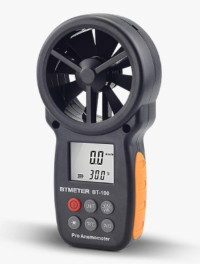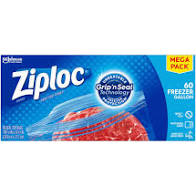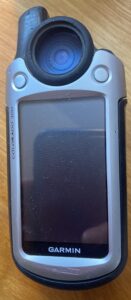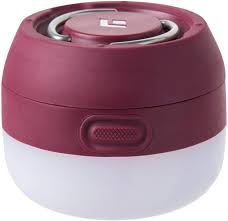Wisdom? That may be a stretch (though it is alliterative). Every Wednesday we share our thoughts in rotating subject areas: gear, social media, hiking/backpacking/camping resources, and tips from the field. These items are culled from our weekly GetHiking! enewsletter, which also includes news and information on hikes and backpack trips in our GetHiking! and GetBackpacking! universes. Subscribe to our weekly enewsletter here.
This week’s focus: gear.
It’s funny the pieces of gear that can excite us most. One day it’s a new pack, the next it’s a Ziplock bag. Today, we focus on the Ziplock end of the spectrum.
See the light: Black Diamond Moji Lantern
Winter backpacking brings with it many delights: mountaintop views afforded by a naked canopy, fewer hikers on the trail and better campsite options, among others. It also brings long nights: it’s not uncommon to spend 12 to 14 hours huddled in your tent waiting out the cold and dark. That’s why in winter it’s especially important to have a good light source that makes your tent feel homier and even a bit warmer. And that’s why we’ll be picking up a Black Diamond Moji lantern for our trip this weekend on the Appalachian Trail. The Moji is simple, lightweight (4.37 ounces), beams out 100 lumens and has a dimmer function. And, it’s one of the least expensive backpack lantern options, retailing for $19.95. Learn more here.
How cold? Best backpacking thermometers
 It’s an odd thing to be obsessed over just how cold it gets on a trip, but it’s an odd thing that just about all of us are obsessed by. Last weekend on the Appalachian Trail north of Asheville we were especially curious about Friday’s overnight low. The forecast was for 19 degrees, but at an elevation 2,000 feet below ours. We speculated it might get as low as 17. Then, Saturday we ran into a couple of thru-hikers who said it was 13 at their camp, which was about 1,000 vertical feet below ours. It’s all about bragging rights, I reckon. Anyway, next time we head out we plan to have an accurate take on the temperature using one of five thermometers recently tested by AmericanStateParks.org. The candidates range from a $6.49 keychain thermometer to a $29.88 digital readout. Their top choice: the BTMeter Anemometer BT-100 . Read the review here.
It’s an odd thing to be obsessed over just how cold it gets on a trip, but it’s an odd thing that just about all of us are obsessed by. Last weekend on the Appalachian Trail north of Asheville we were especially curious about Friday’s overnight low. The forecast was for 19 degrees, but at an elevation 2,000 feet below ours. We speculated it might get as low as 17. Then, Saturday we ran into a couple of thru-hikers who said it was 13 at their camp, which was about 1,000 vertical feet below ours. It’s all about bragging rights, I reckon. Anyway, next time we head out we plan to have an accurate take on the temperature using one of five thermometers recently tested by AmericanStateParks.org. The candidates range from a $6.49 keychain thermometer to a $29.88 digital readout. Their top choice: the BTMeter Anemometer BT-100 . Read the review here.
Dry bag alternative: Freezer Ziplocs
 You do so look forward to lunch on a long day hike. Even if it’s simply a robust PBJ, brimming with chunky Skippy and oozing with strawberry Smucker’s, it’s a key component to a successful hike. Now imagine your chagrin upon opening your pack come noon and discovering the flimsy plastic sandwich bag you’ve entrusted with your tasty repast didn’t withstand the impact of that tumble you took: your PBJ has exploded beyond recognition and now covers the inside of your pack. Tsk.
You do so look forward to lunch on a long day hike. Even if it’s simply a robust PBJ, brimming with chunky Skippy and oozing with strawberry Smucker’s, it’s a key component to a successful hike. Now imagine your chagrin upon opening your pack come noon and discovering the flimsy plastic sandwich bag you’ve entrusted with your tasty repast didn’t withstand the impact of that tumble you took: your PBJ has exploded beyond recognition and now covers the inside of your pack. Tsk.
That likely wouldn’t be the case had you used a gallon Ziploc Freezer Bag. And yes, Ziploc, because that is the choice of the Appalachian Mountain Club, which notes in a blog: “They’re thicker than your average sandwich bag, which averages 1.5 mil in thickness (a mil is 1/1000th of an inch). Most freezer bags are at least 2 mil; Ziploc brand freezer bags are some of the thickest at 2.7 mil.” Further, notes the AMC: “What’s more, a thickness of 2 mil or more allows manufacturers to produce the closure strip at the same time the bag is produced. On thinner sandwich bags, the closure strip has to be laminated on (and can potentially peel off with repeated use).” (Read the blog for more insight here.)
What’s more, if you crave something hot for lunch, you can fill a bag with soup mix, ramen, whatever and add boiling water! The bag will hold and you can dine straight from it.
Ziploc Freezer Bags also relatively inexpensive: you can get a 28-pack for less than $5.
Finally, a beef with wasteful obsolescence
 On a scouting hike in the coastal plain in February I went to mark a waypoint on my GPS and discovered that the soft rubber button — called a Rock ’n’ Roller — used to navigate between screens had popped off. I retraced my steps for a quarter mile, to no avail. No biggie, I thought, I’ll just get a replacement part.
On a scouting hike in the coastal plain in February I went to mark a waypoint on my GPS and discovered that the soft rubber button — called a Rock ’n’ Roller — used to navigate between screens had popped off. I retraced my steps for a quarter mile, to no avail. No biggie, I thought, I’ll just get a replacement part.
Not exactly. The missing part was on a Garmin Colorado 300, which Garmin replaced more than a decade ago with the Oregon, Garmin’s first touch-screen GPS. When I Googled a replacement part, I was taken first to a website with all sorts of electronic replacement parts. Alas, not this one: they had done exhausted their supply. I went to another site that wanted a dollar to tell me whether they had the part; I passed. As a last resort, I went to Garmin’s customer support. This is always my last resort, as I’ve never had a productive (or civil, really) interaction with Garmin. We don’t have that part anymore, I was curtly told by the chatbot.
It’s not that I’m miffed that I need to buy a new unit for at least $400 (though I am). It’s more that the device is perfectly functional, save for this one silly part. I thought of the growing number of outdoor gear and equipment makers, lead by Patagonia, who encourage you to use their gear until there’s no gear left to use. Not, apparently, the case with Garmin.
Before I succumb to a new GPS, I will search a bit more. The part on the site that no longer had it in stock, was less than $30; it’s worth a bit more sleuthing.
In the meantime, if you have a spare Rock ’n’ Roller (it goes where the blue hole is in the photo) that fits a Garmin Colorado 300, give me a yell. Let’s talk.
* * *
GetHiking! enewsletter
Find tips, gear recommendations, our hikes and trips and more in our weekly GetHiking! enewsletter. Sign up here.
